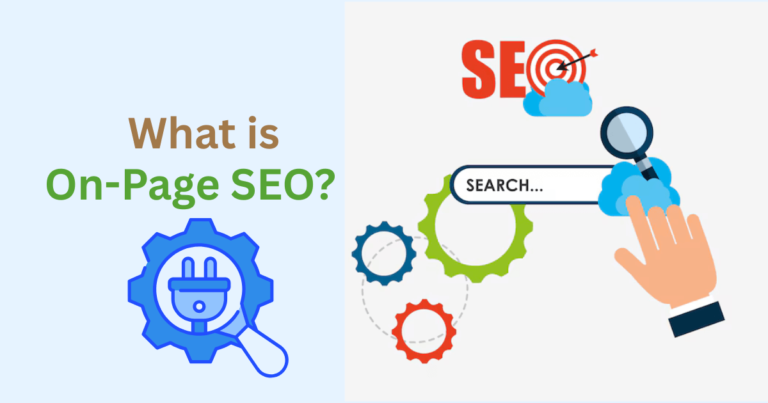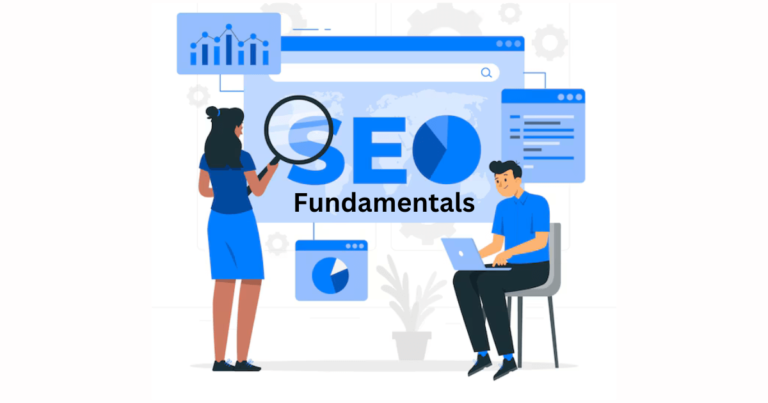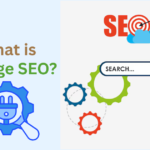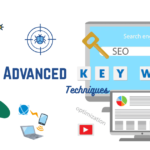1. Introduction
What is technical SEO?
Technical SEO refers to the process of optimizing a website’s infrastructure to improve its visibility and performance in search engines. Unlike on-page SEO (which focuses on content) and off-page SEO (which deals with backlinks), technical SEO ensures that search engine bots can efficiently crawl, index, and rank your website.
It involves improving site speed, mobile friendliness, security (HTTPS), and structured data, and eliminating errors like broken links, duplicate content, and crawl issues. Proper technical SEO helps search engines understand your site better, ensuring higher rankings, a better user experience, and increased organic traffic.
Why is Technical SEO Important for Search Rankings?
Search engines prioritize well-structured, fast, and user-friendly websites. Technical SEO is crucial because:
- It ensures search engines can crawl and index your pages correctly.
- Improves page load speed, enhancing user experience, and reducing bounce rates.
- Helps fix issues like duplicate content, broken links, and mobile usability.
- Boosts security, which increases user trust and credibility.
Without proper technical SEO, even high-quality content may struggle to rank.
Key Elements of Technical SEO
Technical SEO consists of several core components, including:
- Website speed and performance
- Mobile-friendliness
- Site architecture and navigation
- Indexing and crawlability
- Security (HTTPS)
- Structured data and schema markup
- Advanced SEO techniques like JavaScript optimization
Table of Contents
2. Technical SEO Fundamentals

Technical SEO focuses on optimizing a website’s backend to improve search rankings. It ensures fast loading, security, and proper indexing, enhancing the user experience and visibility. To implement technical SEO and optimize site speed, mobile usability, and structured data while fixing crawl errors, broken links, and duplicate content issues.
Understanding the Basics of Technical SEO
Technical SEO ensures that your website is optimized for search engine bots while maintaining a seamless user experience. It involves:
- Fixing crawl errors
- Enhancing mobile-friendliness
- Improving website loading speeds
- Optimizing site structure
Best Practices: Following Industry Standards for Site Optimization
To improve your technical SEO, follow these best practices:
- Use a responsive design to ensure mobile compatibility.
- Implement HTTPS for better security.
- Optimize URL structures for readability and keyword relevance.
- Use structured data to enhance search engine understanding.
- Fix broken links and 404 errors.
Technical SEO Checklist: Essential Tasks for Every Website
- Check site speed using Google PageSpeed Insights.
- Optimize images with compression tools.
- Ensure proper XML sitemap and robots.txt configuration.
- Fix duplicate content issues with canonical tags.
- Implement structured data markup.
How to Perform a Technical SEO Audit: Step-by-Step Guide
- Check Website Speed – Use Google PageSpeed Insights and GTmetrix.
2. Analyze Mobile Usability – Use Google’s Mobile-Friendly Test.
3. Fix Crawl Errors – Check Google Search Console.
4. Review Indexing Issues – Ensure proper robots.txt settings.
5. Secure Your Website – Use HTTPS.
6. Optimize Structured Data – Use Google’s Structured Data Testing Tool.
3. Website Performance Optimization

Website performance optimization enhances speed, user experience, and search rankings. A fast-loading site reduces bounce rates and improves engagement. To optimize, compress images, minify CSS and JavaScript, enable caching, use a CDN, and fix broken links. Regular monitoring and improvements ensure a smooth, high-performing website.
How Site Speed Affects SEO and User Experience
A slow-loading site negatively impacts rankings and user experience. Google prioritizes fast-loading websites because they:
- Reduce bounce rates
- Improve user engagement
- Enhance conversion rates
Core Web Vitals: LCP, FID, and CLS Explained
- Largest Contentful Paint (LCP): Calculates the time it takes for the largest content element to load.
- First Input Delay (FID): Measures responsiveness to user interactions.
- Cumulative Layout Shift (CLS): Measures visual stability of page elements.
Optimizing Images: Best Practices for Faster Loading Times
- Use WebP format for smaller file sizes.
- Compress images using TinyPNG or ImageOptim.
- Implement lazy loading for images below the fold.
Minifying CSS, JavaScript, and HTML
Reducing file sizes by removing unnecessary code can improve page load times. Use:
- CSS Minifier and JS Minifier tools.
- Enable Gzip compression for faster loading.
Using a Content Delivery Network (CDN)
A CDN stores cached versions of your site across multiple servers worldwide, improving loading speed for users in different locations.
4. Mobile SEO and Responsiveness
Mobile SEO ensures a site is mobile-friendly for better rankings and user experience. With mobile-first indexing, Google prioritizes responsive sites. To optimize, use a responsive design, improve page speed, optimize images, enable AMP, and ensure touch-friendly navigation. Regular testing helps maintain seamless performance across devices.
Why Mobile-Friendliness is Critical for Rankings
Google employs mobile-first indexing, which gives a site’s mobile version precedence when it comes to ranking. Mobile-friendly sites offer:
- Better user experience
- Improved engagement
- Higher search rankings
How to Optimize Your Site for Mobile SEO
- Use responsive web design.
- Ensure readable fonts and touch-friendly buttons.
- Optimize images for mobile screens.
- Avoid intrusive pop-ups.
Accelerated Mobile Pages (AMP): Pros and Cons
- Pros: Faster loading speeds, better UX.
- Cons: Limited customization, reduced ad revenue.
Google’s Mobile-First Indexing and What It Means for You
Your mobile site must be fully optimized since Google primarily considers it for indexing and ranking.
Testing and Improving Mobile Compatibility
- Use Google’s Mobile-Friendly Test.
- Check performance on different devices.
- Implement mobile-friendly navigation.
5. Site Architecture and Navigation

Site architecture and navigation organize content for better user experience and search rankings. A well-structured site helps search engines crawl efficiently. To optimize, use clear URL structure, breadcrumb navigation, internal linking, and XML sitemaps. Ensuring intuitive navigation improves usability, engagement, and SEO performance.
Creating an SEO-Friendly URL Structure
- Use short, descriptive URLs.
- Include keywords naturally.
- Avoid special characters and numbers.
The Role of Breadcrumb Navigation in SEO
Breadcrumbs improve site structure, helping both users and search engines understand page hierarchy.
Importance of XML Sitemaps: How to Create and Submit One
An XML sitemap helps search engines discover and index pages efficiently. Submit it via Google Search Console.
Optimizing Robots.txt for Better Crawling
- Allow access to important pages.
- Block irrelevant sections like admin panels.
- Use the Google Robots.txt Tester tool.
Canonical Tags: Preventing Duplicate Content Issues
Canonical tags tell search engines which version of a page to index, preventing duplicate content penalties.
6. Website Security & HTTPS
Website security and HTTPS protect user data and improve SEO rankings. Google prioritizes secure sites for better trust and performance. To implement, install an SSL certificate, migrate all pages to HTTPS, fix mixed content issues, and update internal links. Regular security audits and malware protection help maintain a safe and secure website.
Why HTTPS Matters for SEO and User Trust
Google considers HTTPS a ranking factor. An SSL certificate encrypts data, making your site secure.
How to Migrate from HTTP to HTTPS Safely
- Obtain an SSL certificate.
- Update internal links to HTTPS.
- Redirect HTTP pages to HTTPS.
- Update the sitemap and submit it to Google.
Fixing Mixed Content Errors
Ensure all resources (images, scripts) use HTTPS to avoid security warnings.
Protecting Your Website from Security Threats
- Use firewalls and malware scanners.
- Enable two-factor authentication (2FA).
- Regularly update plugins and themes.
7. Structured Data and Schema Markup
Structured data and schema markup are tools that help search engines understand the content of your website more effectively. By adding specific tags to your HTML, you provide context about your data, such as articles, events, or products. This enhances search visibility, potentially resulting in rich snippets that improve click-through rates. Implementing schema markup can boost your site’s SEO and user engagement.
What is Structured Data?
Structured data helps search engines understand content better, improving search visibility.
Implementing Schema Markup for SEO
Use JSON-LD format to add schema markup to your pages.
How Rich Snippets Improve Click-Through Rates (CTR)
Rich snippets display additional information (ratings, prices) in search results, boosting CTR.
Best Practices for Adding FAQ and Product Schema
- Use Google’s Structured Data Testing Tool.
- Ensure schema data matches on-page content.
8. Crawling and Indexing Optimization
Crawling and indexing optimization involves improving how search engines discover and catalog your website’s content. By ensuring your site has a clear structure, using XML sitemaps, and optimizing internal links, you facilitate efficient crawling. This enhances visibility in search results, helping users find relevant content quickly and improving overall SEO performance.
How to Submit a Sitemap to Google
Upload the XML sitemap to Google Search Console under “Sitemaps.”
Fixing Crawl Errors in Google Search Console
Regularly check the “Coverage” report to resolve errors.
Optimizing Crawl Budget for Better Indexing
- Prioritize indexing of important pages.
- Avoid duplicate or low-quality content.
Managing Duplicate Content with Noindex & Canonical Tags
Use noindex tags for thin pages and canonical tags for similar content.
9. Advanced Technical SEO Techniques

Advanced technical SEO techniques enhance your website’s performance and search visibility. These include optimizing site speed, ensuring mobile-friendliness, implementing structured data, and fixing crawl errors. By focusing on these elements, you improve user experience and search engine rankings, making it easier for users to find and engage with your content.
JavaScript SEO: Ensuring Proper Indexing
Ensure JavaScript-based content is accessible to search engines.
Lazy Loading Images and Videos for Faster Load Times
Lazy loading defers loading of non-visible content, improving page speed.
Server-Side vs. Client-Side Rendering
Server-side rendering is preferred for SEO as it delivers content faster.
Optimizing for Voice Search and AI Assistants
Use natural language and structured data to target voice search queries.
Hreflang Tags for International SEO
Hreflang tags indicate language and region-specific versions of your site.
10. Technical SEO Audit and Ongoing Optimization
A technical SEO audit assesses your website’s performance, identifying issues like broken links, slow loading times, and poor mobile usability. This process helps prioritise fixes to enhance search visibility. Ongoing optimization involves regular updates and monitoring, ensuring your site adapts to search engine algorithm changes and maintains optimal performance for users.
How to Perform a Full Technical SEO Audit
Use tools like SEMrush, Ahrefs, and Screaming Frog to diagnose issues.
Tools for Tracking and Fixing Technical SEO Issues
- Google Search Console
- GTmetrix
- PageSpeed Insights
Common SEO Mistakes and How to Avoid Them
- Ignoring mobile-friendliness.
- Slow page speeds.
- Poor URL structures.
Conclusion
Technical SEO is essential for a high-performing website, ensuring that search engines can efficiently crawl, index, and rank your content. A well-optimized site improves user experience, enhances page speed, and ensures mobile-friendliness—key factors that contribute to higher search rankings.
Regular audits and updates help identify and fix issues such as broken links, slow loading times, security vulnerabilities, and indexing errors. By implementing these strategies, you can maintain a strong technical foundation, boost organic traffic, and stay ahead of the competition in search engine rankings.
FAQs
- What is the most important part of technical SEO?
- Site speed, mobile friendliness, and indexing optimization.
2. How often should I conduct a technical SEO audit?
- Every 3–6 months for optimal performance.
3. Does website security impact SEO?
- Yes, HTTPS is a ranking factor.
4. What is a crawl budget?
- The number of pages Googlebot crawls within a given timeframe.
5. Why is schema markup important?
- It enhances search engine understanding and improves CTR.












